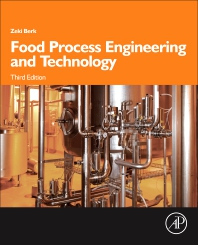Coronavirus
COVID-19's effect on supply chains
Hard-hit areas face logistical challenges

Seemingly overnight, the world has been consumed by the coronavirus (COVID-19).
Since showing up on the world stage in November 2019 within the Wuhan area of China, the virus has quickly morphed into a global health threat, while disrupting sensitive supply channels. As of mid-March, 2020, COVID-19 has been designated as a global pandemic by the World Health Organization (WHO) and has been confirmed in more than 130 countries. Within the United States, cases have been identified in every state and the number of confirmed cases is rapidly increasing.
Proactive steps are being taken to slow the spread of the disease, including several countries now closing their borders. Other tactics, such as the cancellations of large gatherings, such as conferences and sporting events, and the discontinuation of non-essential travel, are being taken by governments, cities, and private businesses.
We are now seeing supply chain disruptions, and threats of disruptions, on a scale never previously witnessed. Organizations are experiencing significant cold chain disruptions, and in particular, imports into and exports out of regions that have been severely impacted, such as China, Italy, and the United States. Pharmaceutical manufacturers are facing challenges with transporting products and active pharmaceutical ingredients out of Asia, posing a potential threat to drug supplies throughout the world.
In the food supply chain, as an example, exporters of chicken from the United States into China are finding that their containers are being diverted to alternative ports in the region as an alternative to product loss at their original port. The downstream effect is that, once the containers are unloaded from the ships, they must be plugged into power sources. Unfortunately, the power supply capacity is limited at port side, which is posing a threat to product spoilage.
Companies conducting air freight programs for items containing a short shelf life, or those that are highly perishable, such as produce and seafood, are experiencing significant challenges and disruptions. Airlines are dramatically reducing their flight schedules over the next several weeks, and the effect of the US Administration has banned flights from European and Schengen countries.
The effect of these recent changes on the supply chain is yet to be seen. With these types of disruptions, organizations are struggling to assure adequate product supply throughout their supply chains. While supply chains generally have been developed with flexibility in mind, disruptions caused by COVID-19 will likely challenge our processes and systems over the upcoming months.
Although the impact of COVID-19 on over-the-road freight remains uncertain, it is possible that as the demand for necessities and the general willingness of the public to travel and spend money decreases, there will be a decreased demand for trucks to move items to location.
It is also important to note a few other trends that are at play within the industry, including the general capacity of trucks on the road being down, and an overall truck driver shortage, which has affected the industry for the last several years. When considered together, manufacturers and purchasing agents should remain in continuous conversation with their shipping companies during these trying times to avoid any major disruptions.
As a compounding effect, the United States Food and Drug Administration (FDA) recently announced that it is postponing most foreign inspections unless they are deemed mission-critical. Those that are will be considered on a case-by-case basis. This means that foods that were processed with the intent to import them into the United States may experience delayed releases, which can impact shelf life, product quality, and assured supply. It is important to work with your suppliers to determine the risk and potential impact to your supply chain.
Although it is not believed that COVID-19 is transmissible through food, at this point, ill employees can pose risks to community spread. Organizations should consider reviewing and updating their policies to exempt ill employees from work as is necessary.
Companies are finding that now is the time to review their crisis management programs. Many companies have successfully employed these types of programs and teams in the past to respond to certain types of predictable incidents, such as regional storms and power outages. However, for an unexpected crisis like COVID-19, it is important to consider and develop multiple scenarios to protect your company and customers. By developing multiple plans and regularly testing them, organizations can be better prepared for whatever emergency they are faced with, which might affect their supply chains, employees, and customers.
When considering the risks associated with COVID-19, crisis management teams must consider the supply chain risks within their crisis management plan. Some of the general topics worth considering include:
- Whether you will need secondary and tertiary approved suppliers
- Whether you will need to source alternative ingredient or develop modified recipes
- Understanding your plans for your 3rd party logistics suppliers and carriers
- How you will manage the reduction or loss of service from your shippers, manufacturers, and distribution centers
- Whether and how you will enhance your employee policies
- Communications plans with respect to your employees, customers, vendors, and the public
- Whether reducing travel is needed for your employees
It cannot be overemphasized: The best way to prevent the spread of COVID-19 is through proper hygiene practices such as hand washing, the use of hand sanitizer, and minimizing the touching of your face. In addition, keeping high touch points such as doorknobs, truck handles, and steering wheels clean and sanitized is important for limiting the spread of the disease.
As with any communicable disease, it is critical that, if an employee is feeling ill, they contact their health care professional, and stay home and away from other people. Additional details regarding best practices can be found at the Centers for Disease Control and Prevention, and the World Health Organization websites.
Jeremy Schneider is business development director, food safety and quality assurance, Controlant. He has more than 15 years of experience in the food quality, safety, and regulatory sector. His experience spans managing food safety and quality systems within several fast-casual restaurant chains as well as food manufacturing, including Boston Market, Chipotle, and Rocky Mountain Foods. During his career, he has addressed some of the most challenging and critical risks faced today by major consumer food brands. He can be contacted at jeremy@controlant.com.
Looking for a reprint of this article?
From high-res PDFs to custom plaques, order your copy today!







